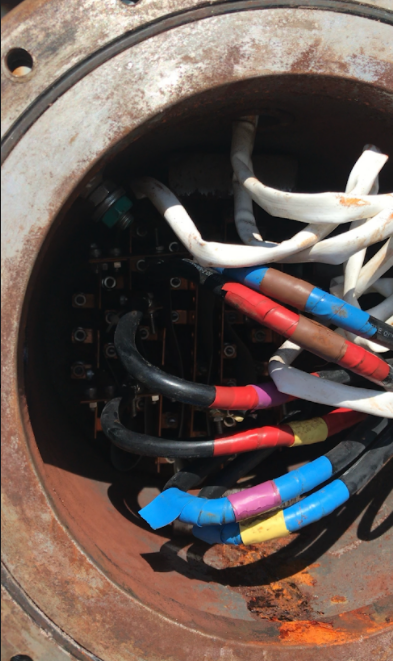How Do You Maintain an Immersion Heater? Your Questions Answered
Electric immersion heaters are at the core of many critical processes in many industries. They are used to regenerate catalysts, heat tanks full of product, or heat streams of gas just to name a few. Maintenance for them and their related components is vital for heater system life and process reliability.
In this blog post, you’ll find answers to the following questions:
- How do you maintain an immersion heater?
- How often should an immersion heater be serviced?
- Should immersion heaters be serviced?
- Is it cheaper to leave an immersion heater on all the time?
- How often should an immersion heater be serviced?
We’ll also discuss the following terms:
- Bus straps
- Sensor and extension wire for OT and TI
- Sludge build-up
How do you maintain an immersion heater?
Electric heaters can be applied directly to a process as in-tank immersion heating or as a circulation heater with an immersion heater mounted inside a pressure vessel. No matter how the heater is installed in your process, it should be inspected at least annually. Including your heater in your scheduled shutdowns or turnaround is a necessity.
Failure Points
One of the primary and for sure most common failure points on your heater will be the jumper bus strapping. A given heater could have dozens of connections between each heater, some have hundreds. These bus straps are used to physically connect each heating element to the applied voltage. The inside of a terminal box of a flanged immersion heater is often referred to in the heating industry as a bird’s nest for good reasons.
Below is a relatively simple wiring diagram for a common immersion heater

Each of these elements must be strapped together with small busbars so that voltage can be evenly applied across them all.
Securing Each Nut
You would not believe how often these straps come loose. Literally inch pounds of torque needs to be applied to each nut securing them. If they are not tight enough, bad stuff happens. Resistance will actually be created at the loose nut spot, causing overheating and eventually burning through the individual strap. This will cause a load imbalance and elements can be lost.
Essential Maintenance
Catching a loose nut and using a torque screwdriver should be done as often as your maintenance schedule will allow. These straps are not easy to get to, so plan on having the unit down and out of service.
The image below is an example of what you will most likely be staring at when you take off the lid on the terminal box:
Other Things To Look Out For
While you are in the terminal box, look for signs of water. In the picture above, you can actually see rust at 6 o’clock. That’s not a good sign when you consider that the terminal box on most of these units is Type 4 rated (NEMA 4). Signs of liquid should be addressed right away by determining the source and eliminating it.
A few possibilities for any liquid in the terminal box are:
- Conduit with no drip loop, or conduit with a way for water to get into it: Water will travel to the lowest point, so make sure your terminal box is not the lowest point
- Compromised heating elements or element welds: Your heater is flanged to a process of some sort. Corrosion can occur at the weld between the element and the flange. Heating elements can short out too for many reasons. If they short out, a pathway can occur that will allow liquid to flow into your terminal box. If this type of leak is discovered, it is bad news. That element has to be repaired or the heater needs to be replaced.
- Corrupted O-ring: As with a Type 4 enclosure, the O-ring could be bad, not allowing a seal from ambient moisture. An easy fix.
The control panel is a vital component when considering overall immersion heater maintenance as well. From the control panel you want to check a few primary functions:
- Check to make sure the voltage coming to the panel is correct: It is common for voltage supply to fluctuate a little based on your facility. Just make sure you are within range.
- Check the wire integrity from the control panel to the heater: Most people will disconnect the wire on both ends and hit it with a megger. Physical/visual inspection is also a good idea.
- Check all incoming signals: Many processes have interlocks with level controllers or pumps. Cycle these signals and make sure that the appropriate interlocks are functioning. If you have a permissive signal from your DCS or plant control system, check this as well to make sure that it is working properly.
- Over-temperature thermocouples are mounted internally to your process and terminated in your panel. Be sure that these connections are landed and secure. Also, check the integrity of your sensor so that you are sure it is working properly and sending the correct signal.
- Process sensors, same as adobe: These sensors are terminated directly to your local temperature controller or run back to the process controller that is responsible for running the heater. Make sure that they are in good working order.
- Power relay systems respond to the temperature control system and allow voltage to be applied when required to your heater: these could be simple contactors/motor starters, Solid State Relays or Triacs (SSR) or Silicone Controlled Rectifiers (SCR’s). Be sure that the signal being applied to this unit is correct, and that the unit switches correctly. It’s very common for SCR boards to fail. Easy replacement.
The Best Preventative Maintenance is Inspection
Finally, an inspection in the process of your heater is critical. If your heater is in a tank, get a look at the heater inside the vessel once your process is shut down and all is safe. Is there build-up around the element like sludge or any kind of coating on the elements? If so, arrange for that to be cleaned off. If your process has your immersion heater in a pressure vessel as a type of inline or circulation heater configuration, plan to pull the flanged immersion heater out and inspect it for the same build-up or sludge. Clean and reinstall.
Write Up Your Immersion Heater Maintenance Plan
Immersion heaters can last a very long time if properly maintained. Regular and routine maintenance and inspections can drastically increase your heater life. We would be glad to help you write your electric immersion heater maintenance plan. Contact Powerblanket today to talk with our process heating industry experts at 833.860.0281 or email us at [email protected].
Frequently Asked Questions
Do immersion heaters need servicing?
Yes, immersion heaters require regular servicing to ensure optimal performance and longevity, focusing on inspecting and securing bus straps, checking for water ingress, and cleaning any sludge build-up.
What is the life expectancy of an immersion heater?
The life expectancy of an immersion heater typically ranges from two to three years, depending on usage and maintenance practices.
What is the preventive maintenance of a heater?
Preventive maintenance for a heater involves keeping the unit and surrounding area clean, inspecting components for dirt or corrosion, and ensuring all connections and signals are functioning correctly.
How do you clean an immersion heater?
To clean an immersion heater, remove any sediment build-up using a damp cloth or a low-power setting on a power washer, ensuring the heating elements are free from sludge or coatings.
Safe, evenly distributed heat for your temperature-sensitive fluids with Powerblanket's Immerson heaters.



